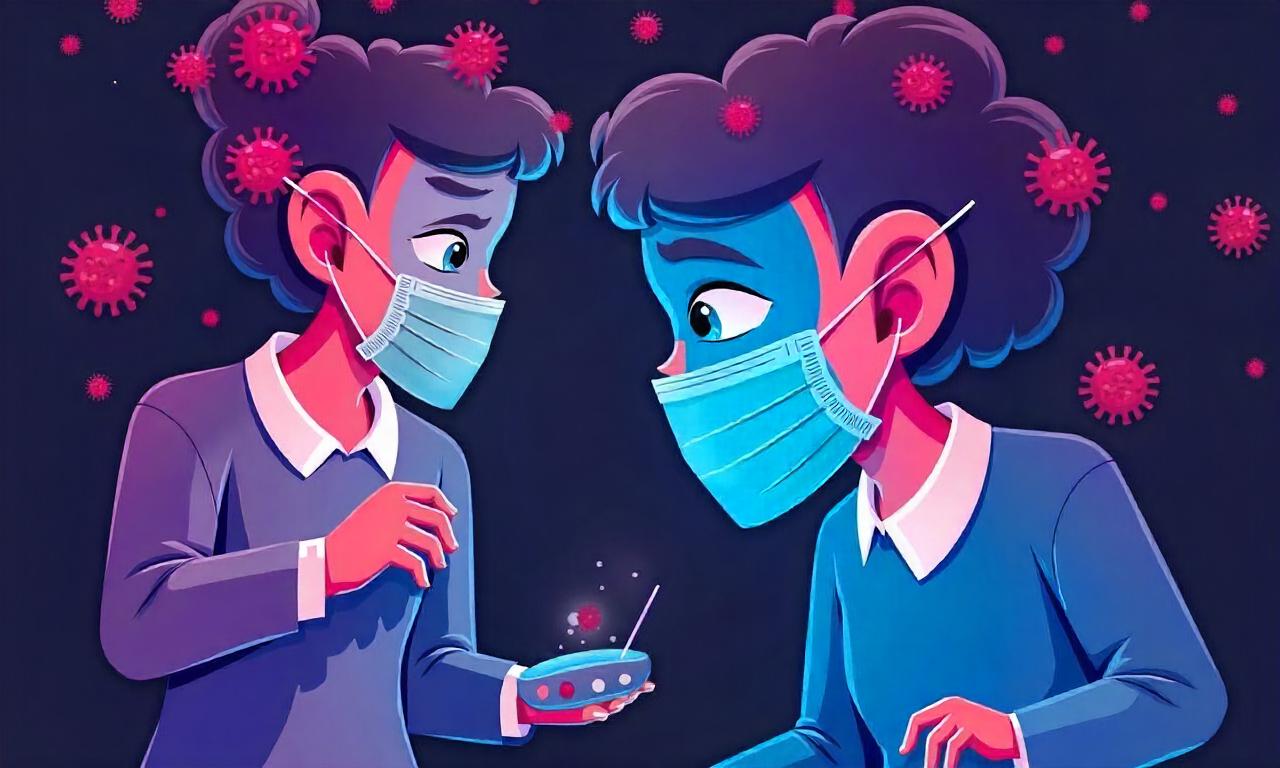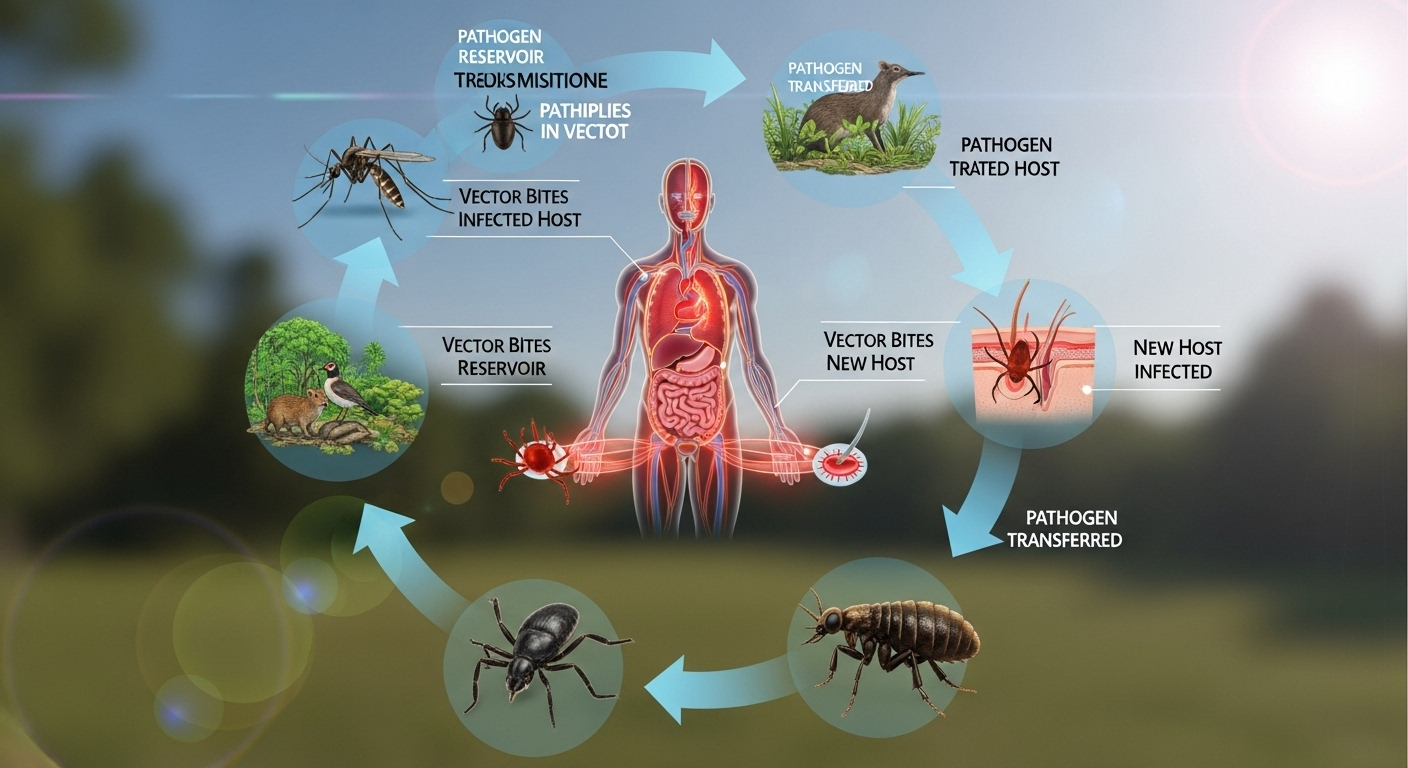In the realm of health and wellness, understanding the difference between viral and bacterial infections is essential for effective treatment and prevention. Whether you’re dealing with a common cold or a severe bacterial infection like strep throat, the underlying cause can significantly impact how you manage your symptoms and recover. Viruses and bacteria are both microscopic organisms, but their structure, behavior, and effects on the human body are worlds apart. This article delves into the difference between viral and bacterial infections, exploring their causes, symptoms, transmission methods, diagnosis, treatment, and prevention strategies. By the end, you’ll have a clear grasp of how these two types of infections differ and how to identify them in everyday life.
Table of Contents
ToggleUnderstanding Viral Infections
Viral infections are caused by viruses, which are tiny infectious agents that can only replicate inside living cells of an organism. Unlike bacteria, viruses are not considered living organisms on their own, as they cannot survive or reproduce outside a host cell. This fundamental difference sets viruses apart from bacteria and plays a crucial role in how they affect the body.
What Are Viruses?
Viruses are composed of genetic material (DNA or RNA) enclosed in a protein coat, and sometimes a lipid envelope. They enter the body through various routes, such as respiratory droplets, bodily fluids, or direct contact with contaminated surfaces. Once inside a host, viruses hijack the cell’s machinery to reproduce, often leading to the production of new virus particles that can spread to other cells. This replication process is key to understanding how viral infections develop and spread.
How Do Viruses Spread?
Viruses spread rapidly due to their ability to mutate and adapt to different environments. They are highly contagious and can be transmitted through airborne particles, direct contact, sexual activity, or vector-borne methods (like mosquito bites). For example, the flu virus spreads through respiratory droplets when an infected person coughs or sneezes. In contrast, viruses like HIV are transmitted through bodily fluids, such as blood or semen. The difference between viral and bacterial infections is evident in their transmission patterns, which influence how they are contained and managed.
Common Examples of Viral Infections
Some of the most common viral infections include the common cold, influenza (flu), measles, rubella, and HIV/AIDS. These infections often affect the respiratory system, skin, or immune system. Viruses can also cause more severe conditions like hepatitis, herpes, and COVID-19. The difference between viral and bacterial infections is particularly clear in their symptoms and treatment approaches. For instance, the common cold is typically mild and self-limiting, while HIV/AIDS requires long-term management with antiretroviral therapy.
Understanding Bacterial Infections
Bacterial infections, on the other hand, are caused by bacteria, which are single-celled microorganisms that can exist independently and reproduce through cell division. While some bacteria are beneficial to the human body, others can cause illness by invading tissues, producing toxins, or interfering with normal bodily functions.
What Are Bacteria?
Bacteria are microscopic organisms that can be found in soil, water, air, and even inside the human body. They play a vital role in processes like digestion and nutrient absorption, but certain strains can lead to infections when they overgrow or invade the body. Bacteria can be classified into Gram-positive and Gram-negative based on their cell wall structure, which affects how they respond to antibiotics. This difference between viral and bacterial infections is central to their biological makeup and behavior.
How Do Bacteria Spread?
Bacteria spread through various means, including direct contact, contaminated surfaces, foodborne transmission, and airborne particles. For example, staphylococcus aureus can be transmitted through skin contact, while Salmonella spreads through contaminated food. Unlike viruses, which require a host to replicate, bacteria can survive and multiply in the environment, making them more persistent in certain conditions. This difference between viral and bacterial infections is important for understanding how they are controlled and prevented.
Common Examples of Bacterial Infections
Some of the most prevalent bacterial infections include strep throat, tuberculosis, urinary tract infections (UTIs), pneumonia, and food poisoning. These infections often target specific organs or systems, such as the respiratory tract, urinary system, or digestive system. Unlike viral infections, bacterial infections can sometimes be treated with antibiotics, which kill or inhibit the growth of bacteria. This difference between viral and bacterial infections is crucial for determining the right course of treatment.
Causes and Transmission
The difference between viral and bacterial infections lies not only in their structure but also in the ways they originate and spread. While both can be transmitted through similar routes, their causes and transmission methods differ significantly.
Transmission Routes
Viral infections are often transmitted through airborne particles, direct contact, sexual activity, or vector-borne methods. For example, the common cold spreads via respiratory droplets, while HIV is transmitted through bodily fluids. In contrast, bacterial infections can be spread through contaminated food, water, touch, or insect bites. Tuberculosis, for instance, is transmitted through airborne droplets, but food poisoning is caused by ingesting bacteria like Salmonella or E. coli. This difference between viral and bacterial infections highlights how their transmission depends on their biological nature.
Environmental Factors
Both viruses and bacteria thrive in different environments, but their transmission and survival depend on specific conditions. Viruses are more fragile and often require a host to survive, while bacteria can withstand harsh conditions for longer periods. For example, the influenza virus is sensitive to heat and can be destroyed by UV light, whereas bacteria like Staphylococcus aureus can survive on surfaces for hours or even days. This difference between viral and bacterial infections** influences how they are managed in public health settings.
Common Transmission Scenarios
To better understand the difference between viral and bacterial infections, let’s look at some typical scenarios: – Viral infections such as measles are highly contagious through respiratory droplets. – Bacterial infections like urinary tract infections (UTIs) are often spread through contaminated surfaces or direct contact with an infected person. – Vector-borne viral infections (e.g., malaria) require insects as intermediaries, whereas bacterial infections like typhoid fever are transmitted through contaminated water or food. This distinction helps in identifying the source of infection and implementing targeted prevention measures.
Symptoms and Duration
When comparing viral and bacterial infections, one of the most noticeable difference between viral and bacterial infections is in their symptoms and the duration of illness. While some symptoms may overlap, the severity and progression of each type can guide diagnosis and treatment.
Symptom Overview
Viral infections often present with flu-like symptoms, including fever, cough, sore throat, runny nose, and body aches. These symptoms are typically caused by the immune response to the virus rather than the virus itself. In contrast, bacterial infections may cause localized symptoms, such as swelling, pain, redness, and discharge. For example, strep throat is characterized by severe throat pain, fever, and white patches on the tonsils, while bacterial pneumonia may result in persistent cough, chest pain, and difficulty breathing.

Duration and Progression
The duration of viral and bacterial infections can vary, but one key difference between viral and bacterial infections is that viral infections often have a longer incubation period and may take days or weeks to show symptoms. Once symptoms appear, they may resolve on their own or require antiviral medication. Bacterial infections, however, tend to develop more rapidly and can be treated with antibiotics, which often shorten the recovery time. For instance, chickenpox caused by the varicella-zoster virus typically lasts 10–14 days, while bacterial UTIs can be resolved in a few days with proper treatment.
Diagnosis and Treatment
Identifying the difference between viral and bacterial infections is critical for effective treatment. While some infections may present similar symptoms, the diagnosis and treatment approaches vary significantly based on the causative agent.
Diagnostic Techniques
Diagnosing whether an infection is viral or bacterial often involves clinical evaluation, laboratory tests, and imaging. For viral infections, PCR testing or antigen tests are commonly used to detect the presence of viral RNA or proteins. In contrast, bacterial infections are diagnosed through cultures, blood tests, or imaging techniques like X-rays or CT scans. The difference between viral and bacterial infections is also reflected in the treatment options, as viruses are not affected by antibiotics, while bacteria can be killed or inhibited with these medications.
Treatment Approaches
Viral infections are typically treated with antiviral medications, which target the virus's replication. For example, oseltamivir (Tamiflu) is used to treat influenza, while ribavirin is used for respiratory syncytial virus (RSV). Bacterial infections, on the other hand, are often treated with antibiotics, which can be bactericidal (killing bacteria) or bacteriostatic (slowing their growth). The difference between viral and bacterial infections is most evident in this treatment approach, as antibiotics are ineffective against viruses.
Prevention Strategies
Preventing viral and bacterial infections requires a combination of hygiene practices, vaccinations, and lifestyle adjustments. While some difference between viral and bacterial infections is evident in their transmission and causative agents, their prevention methods also share similarities.
General Prevention Measures
To prevent viral and bacterial infections, individuals should adopt hygienic habits like regular handwashing, covering coughs and sneezes, and avoiding close contact with sick people. Viral infections are often prevented through vaccination, such as the flu vaccine or mumps vaccine, while bacterial infections can be reduced with proper sanitation and clean food handling. The difference between viral and bacterial infections is also seen in their vaccination strategies, as viruses are often more predictable in their spread.
Importance of Vaccination
Vaccination plays a crucial role in preventing viral infections. The difference between viral and bacterial infections is that viruses are more likely to be targeted by vaccines, which stimulate the immune system to recognize and fight specific pathogens. For example, polio and measles are preventable with vaccines, while bacterial infections like tetanus require vaccines as well, but treatment with antibiotics is often needed if infection occurs.
Hygiene and Environmental Controls
In addition to vaccination, hygiene and environmental controls are essential for preventing viral and bacterial infections. For viral infections, regular handwashing with soap is particularly effective in reducing transmission. For bacterial infections, avoiding contaminated food and water, washing hands after using the bathroom, and keeping surfaces clean are key preventive measures. The difference between viral and bacterial infections is also evident in their response to environmental factors, such as temperature or humidity.
FAQ Section
Q: How do I know if I have a viral or bacterial infection?
A: The difference between viral and bacterial infections can be identified through symptoms and diagnostic tests. Viral infections often include flu-like symptoms like cough and fever, while bacterial infections may present with localized symptoms such as swelling or pain. A healthcare professional can perform tests like PCR or cultures to determine the cause.
Q: Can a bacterial infection be treated with antibiotics?
A: Yes, bacterial infections are usually treatable with antibiotics, which kill or inhibit the growth of bacteria. However, antibiotics are ineffective against viral infections, so viral infections require antiviral medications or supportive care.
Q: Are viral infections more contagious than bacterial infections?
A: Viral infections are often more contagious because they can spread through airborne particles or direct contact. However, bacterial infections like food poisoning can also spread rapidly in certain environments. The difference between viral and bacterial infections lies in their transmission patterns and environmental resilience.
Q: What are some examples of viral and bacterial infections?
A: Viral infections include the common cold, influenza, measles, and HIV, while bacterial infections involve strep throat, tuberculosis, food poisoning, and urinary tract infections (UTIs).
Q: Can the body naturally fight off both types of infections?
A: Yes, the immune system can fight off both viral and bacterial infections, but viral infections often require specific antiviral treatments, whereas bacterial infections may be treated with antibiotics or managed through rest and hydration.
Summary
Understanding the difference between viral and bacterial infections is essential for effective diagnosis and treatment. While both types of infections can cause symptoms like fever and fatigue, their causative agents, transmission methods, and treatment options vary significantly. Viral infections are caused by viruses and often spread through airborne particles or direct contact, while bacterial infections are caused by bacteria and can be transmitted through contaminated food, water, or surfaces. The difference between viral and bacterial infections is also evident in their symptoms and duration, with viral infections typically resolving on their own or with antiviral medications, and bacterial infections often responding to antibiotic therapy. Preventing these infections requires a combination of vaccinations, hygiene practices, and environmental controls. Whether you’re dealing with a common cold or strep throat, knowing the difference between viral and bacterial infections can help you make informed decisions about your health.














